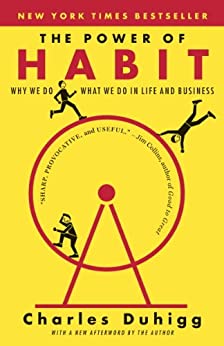The Power of Habit

Overview
This one’s been on my reading list for a while—I’ve seen it mentioned in tons of other books. I got a chance to borrow it, and ended up reading through it pretty quickly.
I’d highly recommend reading this book, especially if you’re unaware of anything around habits. It explains the mechanics of habits, as well as how to manage and change them.
How Habits Work
Fundamentally, a habit is a behavioral loop. There’s a cue that triggers a routine in order to get a reward. After our brain becomes familiar with this loop, it will automatically trigger us to perform a routine upon experiencing a cue.
The key to establishing a new habit is to create a craving or anticipation for a reward. Initially, our brains feel good when they actually receive a reward. As a habit loop is formed, our brains start feeling good once it experiences the cue—before it receives the reward. This strengthens and builds the habit.
The key to changing a habit is to swap or modify routines. Keep the existing cues and rewards, but have a different routine. A key part of this is that you also need some kind of belief that the change will work. It’s not well understood, but without that belief people might not have the motivation to persist in a new habit.
Utilizing Habits
In a nutshell, habits affect everything. If you can get a lot of people to do good things via a habit, this can have large, multiplicative effects. Even more, it happens a bit without effort.
One kind of habit is the keystone habit—a pivotal habit that causes lots of downstream improvements. The habit either forces other habits, or makes it more likely that you’ll follow up on other habits.
Habits can also be used to help build up willpower and handle difficult situations. This is done by anticipating difficult situations and envisioning how they’ll react to them. This can be turned into a habit by identifying cues and ensuring that you feel rewarded for handling a situation well.
Despite habits being powerful, it’s not always easy to change a habit—particularly when habits are baked into large organizations. A crisis or significant change often makes people most accepting to routine changes. Because of this, it’s good to take advantage of (and create a prolonged impression of) a crisis to help people change for the better.
Habits are also able to drive social movements, such as the Montgomery Bus Boycott. There are a few critical elements that make these successful: having a combination of close friends, weak ties, and ensuring that the movement becomes self-propelling.